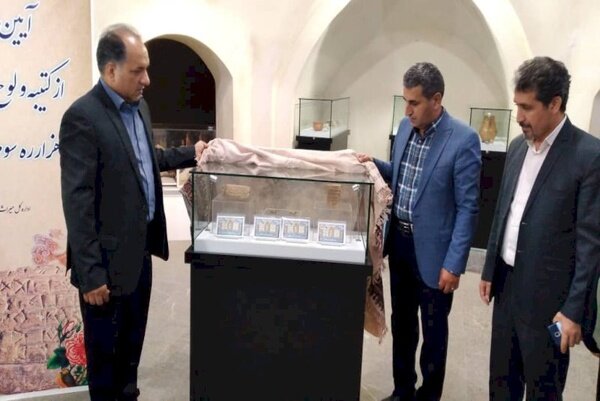Translation of millennia-old cuneiform tablets unveiled

TEHRAN - The translation of four millennia-old cuneiform tablets has recently been unveiled in a cultural heritage museum located in central Iran.
“Two of the cuneiform tablets have been unearthed from (the UNESCO-registered) Tchogha Zanbil, and they date from the Elamite era,” ILNA quoted Arak’s provincial tourism chief as saying on Thursday.
“Two other cuneiform tablets, which their translations unveiled today, date some 3,000 years and they belong to the Sumer civilization,” Mostafa Marzban said.
Sumer was situated in the southernmost part of Mesopotamia, between the Tigris and Euphrates rivers, in the area that later became Babylonia and is now southern Iraq, from around Baghdad to the Persian Gulf.
“They are among the rarest cuneiform clay tablets being kept in Iran,” the official noted.
UNESCO-listed Tchogha Zanbil is widely known as the world’s best surviving example of Elamite architecture. The ruined ziggurat stands in Khuzestan province, southwest Iran. It was made a UNESCO site in 1979.
Tchogha Zanbil is the largest ziggurat outside of Mesopotamia and the best preserved of this type of stepped pyramidal monument. Lonely Planet says that even if you’re not a fan of ancient ruins, the great bulk and splendid semi-desert isolation of the site can’t fail to impress. Try to catch it in the soft, golden light of late afternoon rather than the harsh midday sun.
The massive ziggurat is located approximately 30 km southeast of Shush and 80 km north of Ahvaz. Reaching a total height of some 25m, the gigantic monument was used to be surmounted by a temple and was estimated to hit 52m during its heyday.
The ziggurat was excavated during six archaeological seasons of excavation between 1951 and 1961 by Roman Ghirshman, a Russian-born French archeologist who specialized in ancient Iran.
According to Encyclopedia, ziggurats, in general, are pyramidal stepped temple towers that bear architectural and religious characteristics of the major cities of Mesopotamia from approximately 2200 until 500 BC. They were usually built with a core of mud brick and an exterior covered with baked brick. Approximately 25 ziggurats are known, being equally divided among Sumer, Babylonia, and Assyria.
Situated in a region inside the modern-day provinces of Ilam and Khuzestan, Elam was one of the most impressive civilizations of the ancient world. It was never a cohesive ethnic kingdom or polity but rather a federation of different tribes governed at various times by cities such as Susa, Anshan, and Shimashki until it was united during the Middle Elamite Period, briefly, as an empire.
Evidence suggests the name Elam was given to the region by others – the Akkadians and Sumerians of Mesopotamia – and is thought to be their version of what the Elamites called themselves – Haltami (or Haltamti) – meaning “those of the high country”. 'Elam', therefore, is usually translated to mean “highlands” or “high country” as it was comprised of settlements on the Iranian Plateau that stretched from the southern plains to the elevations of the Zagros Mountains.
Elamite language, an extinct language spoken by the Elamites in the ancient country of Elam, included the region from the Mesopotamian plain to the Iranian Plateau. According to Britannica, Elamite documents from three historical periods have been found. The earliest Elamite writings are in a figurative or pictographic script and date from the middle of the 3rd millennium BC.
AFM
Leave a Comment